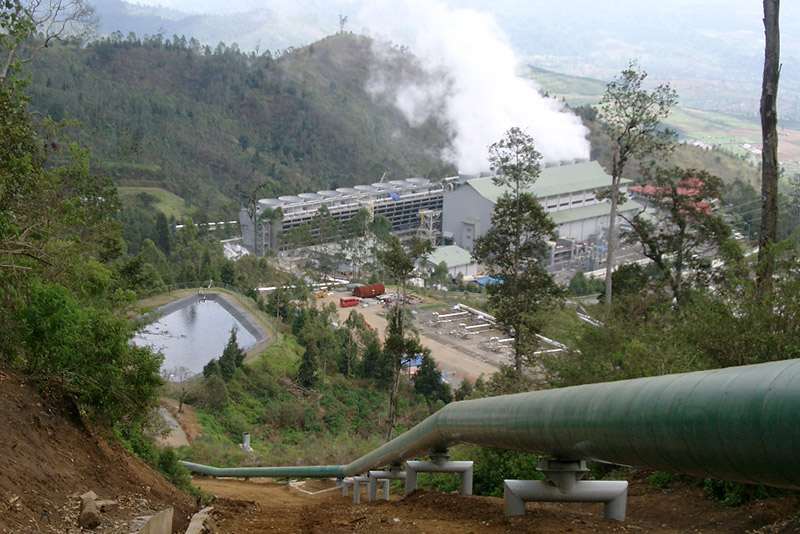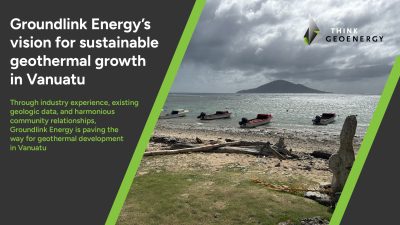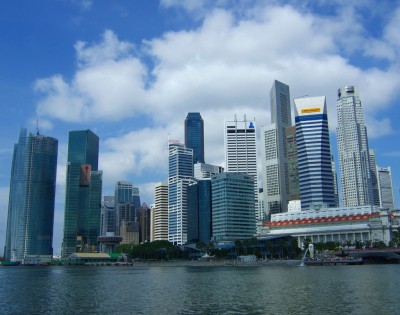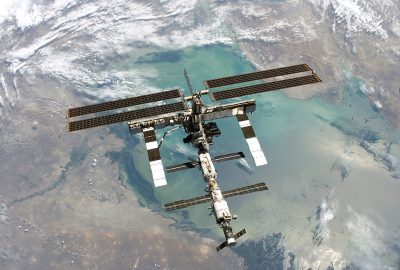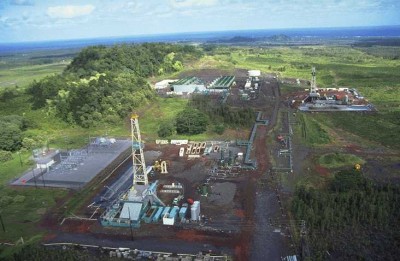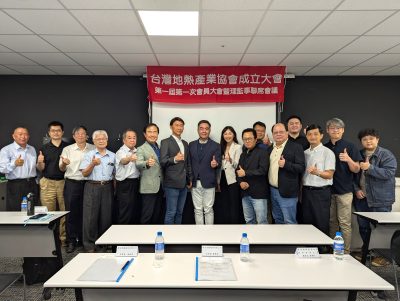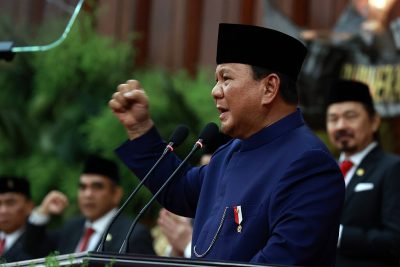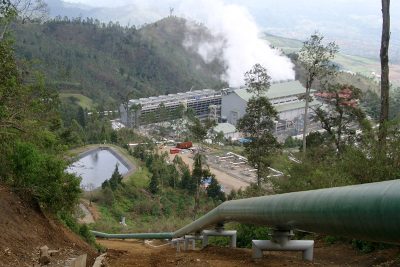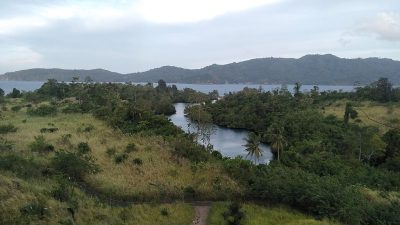Financial ratings provide insight into op’s of Salak-Darajat geothermal plants, Indonesia
Evaluating proposed financial notes to be issued by PT Star Energy Geothermal, Fitch Ratings has provided some interesting details on the operations of the Salak-Darajat geothermal plans in Java, Indonesia, incl. the planned 23 MW expansion for Salak.
Rating company Fitch Ratings released a rating action commentary on Star Energy Geothermal. The company has assigned Star Energy Geothermal (Salak-Darajat) Restricted Group’s (SEGSD RG) proposed senior secured US dollar notes due 2029 and US dollar notes due 2038 expected ratings of ‘BBB-(EXP)’. The Outlook is Stable.
The final rating is contingent upon the receipt by Fitch of final documents conforming to information already received as well as the final pricing and financial close on the proposed notes.
While rather financial in nature, the note provides some rather interesting details on the operations and financial basis for the geothermal operations at Salak-Darajat in Indonesia. So here below the release in full, including details on the risks, operation and more on the plants and its operation.
The SEGSD RG benefits from its long-term energy sale contracts (ESCs) to utilise geothermal resources and sell steam and electricity to Indonesian government-owned power company PT Perusahaan Listrik Negara (Persero)’s (PLN, BBB/Stable). The take-or-pay nature of the ESCs with PLN eliminates most volume and merchant price risks. The geothermal resources consultant GeothermEx confirmed that the projects can maintain the target level of generation until the end of the ESC terms, subject to drilling of make-up wells and performance of the well intervention programme. However, there is some uncertainty about the timing of the capex associated with drilling make-up wells and well intervention due to the nature of geothermal assets.
The Salak and Darajat plants have been in operation for more than 20 years and they require capex in the near term for lifetime extension (LTE). Technical consultant Jacobs has confirmed that the LTE programme and the indicative budgets proposed by SEGSD RG’s management are reasonable. However, the exact amount of LTE capex will be known only after the lifetime assessment (LTA) is completed on all Star Energy-operated turbine units.
Key Ratings Drivers
Robust Operating Track Record; Inherent Volatility in Resource Supply: Operation Risk – Weaker
The Salak and Darajat geothermal plants are operated by an in-house management team. The management team has maintained the plants’ availability and capacity factors at very high levels, in particular for the power generation units that Star Energy operates itself. However, self-operation exposes the RG to the risks of cost overruns and operational underperformance.
However, these risks are mitigated by the detailed operating costs and maintenance capex budget forecast by management. GeothermEx has confirmed that the budget is consistent with the costs normally incurred for a geothermal project of this size and type. The resource depletion risk means the plants require constant drilling of make-up wells and well intervention. The notes include a major maintenance reserve account (MMRA), which will prefund one-third of the estimated major drilling capex over the next three years. The MMRA will also prefund one-third of the major maintenance capex and capex for the Salak binary power plant development in the next three years. However, given the nature of geothermal assets, there is some uncertainty about the timing of and the amount of the drilling capex.
The Salak and Darajat plants require some capex in the near term for LTE after more than 20 years in operation. Star Energy has conducted LTA on two turbine units that it operates to assess their condition and identify the capex required to extend their lives. Management plans LTAs for the remaining three units as well. Jacobs has confirmed that the LTE programme and the indicative budgets proposed by the management are reasonable. Jacobs expects the plants to have reliable operations over the remaining production period if SEGSD RG maintains its O&M standard. However, there remains uncertainty of the amount of the LTE capex, which will only be known after the LTAs on the remaining turbine units are completed.
Like other geothermal power plants, the Salak and Darajat plants are exposed to seismic and landslide risks. There were some incidents where landslides affected geothermal operations at the Salak plant. Management has appointed an international consultant to conduct a geohazard mapping and study to identify potential risks at the Salak and Darajat plants. The consultant has identified four high-risk areas at the Salak plant and no high-risk areas at the Darajat plant. Countermeasure works are being conducted to mitigate the risks and were originally expected to complete in 2020. However, due to the COVID-19 pandemic, SEGSD RG’s management chose to delay some works at three of the four areas to 2021 and 2022 to minimise the number of people working in the Salak plant. During this period, management continues to closely monitor the situation to ensure that there is no excessive soil movement that would compromise the steam supply. The projects have comprehensive insurance to cover property damage and business interruption.
Detailed Capex Plan to Support Resource Supply: Revenue Risk (Volume)- Midrange
Geothermal resources decline over time, and geothermal operators have to overhaul existing wells and drill make-up wells to counter the reduction in steam supply. SEGSD RG has a detailed capex plan over the next 20 years, which GeothermEx has reviewed and found it to be consistent with both historical costs and the expected requirements for well field maintenance. GeothermEx has also confirmed that the geothermal resources are sufficient to support generation through 2040.
Curtailment risk is limited by the take-or-pay nature of the ESCs, which require PLN to pay for 80%-95% of the rated capacity of each unit if they are not dispatched. Despite the lockdown imposed in Indonesia and weakened electricity demand as a result of the COVID-19 pandemic, electricity generation by SEGSD RG increased so far in 2020 compared with the same period last year.
Supportive Long-Term ESC: Revenue Risk (Price) – Stronger
All of the capacity at the Salak and Darajat plants is fully contracted with PLN under long-term ESCs that run beyond the debt term. Therefore, the plants are not exposed to merchant price risk. The tariffs are fixed under the ESCs using straightforward, broad-based publicly available indexation formulas. The tariffs are denominated in US dollars but indexed to the US dollar-Indonesian rupiah exchange rate and inflation in the US and Indonesia.
The capacity contracted under the ESCs is more than the installed capacity. Therefore, the additional capacity developed will have the same tariff structure as the existing capacity. The Salak plant is developing a binary power unit that will increase its total capacity to 390MW from 377MW.
For Darajat Unit 1, the steam base price is 1.0 US cent/kWh for generation above 30GWh under the ESC while the base price for Darajat Unit 2 and 3 is not subject to such a cap. The 30GWh cap represents about 75% of the monthly maximum capacity for Unit 1 (approximately 40GWh).
Peer Group
Fitch rates the US dollar secured bonds issued by Star Energy Geothermal (Wayang Windu) Limited (SEGWW) at ‘BB-‘ with a Stable Outlook. SEGSD RG and SEGWW, which operates a geothermal plant at Wayang Windu, operate under long-term take-or-pay ESCs with PLN. Both have established operating track records, with their geothermal resources validated by engineering consultants.
SEGSD RG benefits from economies of scale from operating 648MW of installed capacity and diversification across nine generation units in two sites. In comparison, SEGWW operates only two units in a single site with 227MW installed capacity. The Darajat operations, which is a dry steam reservoir, have cost advantages over Wayang Windu. On a per MW basis, SEGSD RG has lower capex than SEGWW. This is because the restricted group operates only five of the nine turbine units, with the remaining four units operated and maintained by PLN. However, SEGWW benefits from higher tariffs.
SEGSD RG’s debt structure benefits from a stronger reserve feature (MMRA equal to one-third of total capex in next three years) compared with SEGWW, where the MMRA is equal to planned maintenance costs for the next six months and prefunding of 25% of the major drilling programme for each half-year period over the next two years. Also, SEGSD RG’s distribution lock-up ratio of 1.15x 12-month backward-looking DSCR is higher than SEGWW’s 1.10x.
In terms of financial profile, the SEGSD RG has an average annual DSCR (ADSCR) of 1.63x under Fitch’s rating case. This is higher than 1.24x for SEGWW. SEGSD RG has a lower initial debt load of about USD1.7 million per MW than the USD2.6 million per MW for SEGWW.
Ratings Sensitivities
Factors that could, individually or collectively, lead to positive rating action/upgrade:
Positive rating action is unlikely over the near term. Positive rating action is contingent upon an established track record of operating performance and visibility over the LTE capex, combined with average ADSCR under Fitch’s rating case across debt terms remaining above 1.65x.
Factors that could, individually or collectively, lead to negative rating action/downgrade:
Average ADSCR under Fitch’s rating case across debt terms dropping to below 1.55x as a result of operational issues or actual steam supply being lower-than-expected
Transaction Summary
SEGSD RG is part of the Star Energy Group, which is the largest geothermal operator in Indonesia. Star Energy Group operates three of the five largest geothermal plants in Indonesia at Wayang Windu, Salak, and Darajat, which have combined capacity of 875MW.
The Salak and Darajat geothermal plants in West Java have capacity of 377MW and 271 MW, respectively. The two geothermal plants started operating in 1994. Under JOCs with PT Pertamina Geothermal Energy, whose parent company is PT Pertamina (Persero) (BBB/Stable), SEGSD RG has the exclusive right to explore, discover, develop, produce, transport, deliver and utilise geothermal energy in the contracted areas in Salak until 2040 and in Darajat until 2041 for Unit 1 and 2 and 2047 for Unit 3.
Salak consists of six units with Units 1-3 supplying steam to PLN for its energy production while Units 4-6 generate electricity for sale to PLN. Darajat consists of three units with Unit 1 supplying steam to PLN and Units 2 and 3 generating electricity for sale to PLN.
The two tranches of US dollar senior secured notes rank pari passu and are co-issued by Star Energy Geothermal Salak, Ltd and Star Energy Geothermal Darajat II Limited, and they are guaranteed by Star Energy Geothermal (Salak – Darajat) B.V. (the parent guarantor), Star Energy Geothermal Salak Pratama, Ltd and Star Energy Geothermal Darajat I Limited. The co-issuers, guarantors and PT Darajat Geothermal Indonesia will form a restricted group. The bond proceeds will be used mainly for repayment of existing senior debt facilities and associated repayment expenses, funding of the DSRA and MMRA, and general corporate purposes relating to the geothermal operations.
Financial Analysis
For Fitch’s base case, we include GeothermEx’s base case assumptions for steam decline rate and make-up well drilling schedule. We also incorporate management’s forecasts for capacity factors, capex and operating costs. Under the Fitch base case, SEGSD RG has an average ADSCR of 1.81x and a minimum ADSCR of 1.66x.
Fitch’s rating case includes GeothermEx’s low case assumptions for steam decline rate and make-up well drilling schedule. We also apply 15% stress on variable operating costs (i.e. contract and rental expenses, and repair and maintenance) and 10% stress to capex (excluding capex associated with make-up well drilling and hookup). For PLN-operated units, we assume generation equals to the take-or-pay levels. For self-operated units, we assume capacity factors equal to the lower of take-or-pay levels or the lowest capacity factors achieved in the past 10 years. Under the Fitch rating case, SEGSD RG has an average ADSCR of 1.63x and a minimum ADSCR of 1.45x. Based on the amortisation profile of each tranche of the secured notes, the average ADSCR for the notes due 2029 is 1.60x while the average ADSCR for the notes due 2038 is 1.65x.
Source: Fitch Ratings
